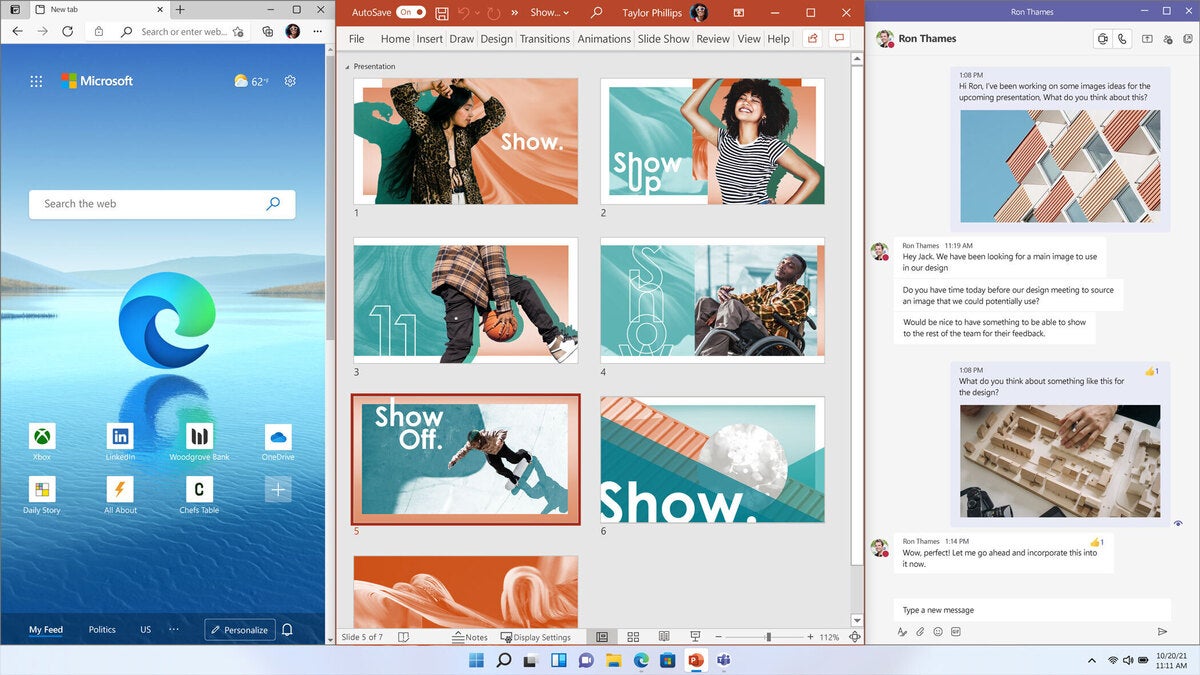 Credit: Microsoft
Credit: Microsoft
When Microsoft releases a new version of Windows, it often powers up the hype machine and lets it rip. Just think back to Windows 95, when Microsoft paid the Rolling Stones US$3 million to use “Start Me Up!” as the operating system’s theme song, draped a 300-foot Windows banner over Toronto’s CN Tower, and lit up the Empire State Building in red, yellow and green, the company’s colours.
Total marketing launch price tag: US$300 million, according to the Washington Post. That’s more than US$500 million in today’s dollars, taking inflation into account.
Recent launches have been more sedate. But even when Microsoft speaks in a quieter voice, it still generally gets the basic facts about its new operating system right, and clearly outlines what it believes are the benefits of moving to it.
At least, until Windows 11 arrived, that is. Microsoft’s Big Reveal for the new operating system on June 24 wasn’t so big and revealed very little. And what it did reveal was often flat-out wrong or misleading. It may well have been the most botched product announcement in Microsoft’s long history.
Let’s start with the most basic of basics — what kind of hardware you need to run the operating system. If the company could get anything right, you would expect, it would start with that.
But no. That’s not what happened.
For the announcement, Microsoft put together a variety of materials detailing what hardware is required to run Windows 11. The company’s Windows System Requirements page formally spelled out what's needed. And its Compatibility for Windows 11 documentation, put together by the company’s engineering team for Microsoft partners, also described the new operating system’s hardware requirements.
But there was a problem. The two documents disagreed with each other about an extremely important hardware spec: the Trusted Platform Module (TPM). TPM is an international standard that in the words of David Weston, director of enterprise and OS security at Microsoft, is used “to protect encryption keys, user credentials, and other sensitive data behind a hardware barrier so that malware and attackers can’t access or tamper with that data.”
The Windows System Requirements page said TPM version 2.0 is required to run Windows 11, while the Compatibility for Windows 11 documentation said only version 1.2 would be required.
That’s no small matter. Many millions of older PCs have TPM version 1.2, but not version 2.0.
Things got worse from there. Microsoft released a compatibility checker that anyone could download to see whether their PC would be able to run Windows 11. When the checker came across a system that had version 1.2 of TPM, it reported that the PC couldn’t run Windows 11, but didn’t say why.
That led to mass confusion among people whose hardware specs met or exceeded those on the Compatibility for Windows 11 documentation, and so assumed their PCs would be able to run Windows 11.
Even more confusing: Some PCs have TPM 2.0 built in, but the computers’ firmware disabled it. So the checker reported the PCs couldn’t run Windows 11, when in fact they could if their owners took a few small steps to enable TPM 2.0 via firmware.
In addition, there’s also some confusion about which precise chipsets will be able to run Windows 11 and which won’t.
Since that initial screw-up, Microsoft has made clear in its documentation that version 2.0 of TPM is required. It still needs to better detail which chipsets will run Windows 11. And the downloadable compatibility checker has been taken offline, replaced by a page describing Windows 11 hardware requirements.
The other problem with the announcement was the lack of a clear reason why anyone might want to upgrade to Windows 11 from Windows 10, even for free. In a blog post, Microsoft’s Panos Panay, Chief Product Officer, Windows + Devices, highlighted new Windows 11 features, such as a Start Menu that is centred rather than anchored to the bottom left of the screen; new ways to arrange windows on the screen; widgets for things like news, weather and stocks; and better gaming.
But he never explained why those new features are important enough to want Windows 11.
 Microsoft
Microsoft
The Windows 11 Start menu is centered. Imagine that.
It was, to put it mildly, an underwhelming sell. (Where are the Rolling Stones when you need them?) The post is full of marketing drivel like: “It’s modern, fresh, clean and beautiful. From the new Start button and taskbar to each sound, font and icon, everything was done intentionally to put you in control and bring a sense of calm and ease.”
Feeling relaxed yet? Oh, sorry, not yet, because for that you need to upgrade to Windows 11.
A botched product introduction, of course, doesn’t necessarily mean the finished product will be a bad one. But based on what I’ve heard and seen from Microsoft so far, I’m not holding out much hope. It may well be one more example of what-you-see-is-what-you-get.
And so far, what we’ve seen is only miscues and errors.




